The letters on the flexi board read “National Indigenous Arts & Handicrafts Fair”.
Narmada laced her eyes gently with her fingers covering the forehead to filter the sunrays which made her eyes squint as she read further details on the flexi board.
She looked at her watch. It reflected quarter to four. There was still time for Neeraj to arrive, atleast another hour, she calculated. Instead of waiting by the beach side, a regular routine that she loves on every Saturday, Narmada chose to walk around the exhibition stalls.
As the sea breeze tousled her hair, She artistically ran her fingers to untangle the curls and stepped inside the exhibition ground. There were many stalls roughly around fifty which were aligned in equidistant arrays. Artisans and craftspeople from nook and corner of India were showcasing their range of craftsmanship, an art they had inherited from generations. Narmada sauntered from one stall to another gazing at the intricate arts & crafts.
Wooden toys from Chennapatnam, Terracotta earthenware pots from Puducherry, Rosewood products from Karnataka, Folklore paintings from Bihar and Madhya Pradesh, Handloom weaves from Odisha, Gujarat, Andhra Pradesh, Bihar were few amid many handicrafts that were exhibited.
SAREE! The aesthetic 6 yard cloth, a symbol of grace and pride for many Indian women, is the latest fashion indulgence for Narmada. The inimitable Pochampally & Ikat handloom weaves greeted a warm welcome in vibrant shades. There were also renowned fabrics such as Kalamkari’s, Jamdaani’s, Uppada’s, Kantha’s and Chikankari’s.
Narmada stopped at one of those stalls that displayed the handloom weaves of pochampalli and ikat.
“How can I help you Madam ?” The stall owner, Mr.Rayudu greeted her with a pleasant smile.
“Thank you for your courtesy. May I take a look at these sarees just to get an overall idea”
“Absolutely Madam, we do have a wide range of collection in different ranges that shall match your choice”
The simple single ikats and resplendent double ikats with bold and vibrant interlocked colours, geometric stripes and checkers striked Narmada’s eye. She pointed in the direction that caught her eye and requested Rayudu to show the mound of sarees.
Rayudu readily placed the Pochampally sarees stack in front of her. While Narmada got busy looking at the splendid array of sarees, she overheard mutters of customers who visited the stall.
“This seems costly…the other stall person offered a fair price. What’s so special about these fabrics ?”
“Ohhh… handlooms maintenance is very tedious…I prefer the synthetic ones”
“Nay…the fabric is uneven. Look at those motifs, they seemingly look unfinished.”
“Arreyyyy…you know, these are their usual marketing strategies. The prices will be higher at such exhibitors than the outside Market”
Rayudu tried to explain his best to the customers that handloom weaves are not perfect. It can never be according to him. He described about the meticulous process involved in reeling and dyeing the spools of yarn and the labour intensive and time consuming craftsmanship in weaving the saree on a loom. His unwoven handloom woes and harsh realities failed to create any impression on the customers as they exclaimed disinterest by moving forward to another stall.
Rayudu faintly smiled at Narmada and got busy in folding the sarees that were tossed and flipped earlier by the customers.
“How long have you been into the handlooms?” enquired Narmada trying to break the loomed silence.
“For the past 25 years my entire family is into weaving which is our primary occupation Madam.”
“That’s fabulous,” exclaimed Narmada.
The sales person let out a wistful smile. “We have been trying hard to make our ends meet Madam. Just like me there are many artisans from my village and perhaps from various other parts of our country who are struggling , yet committed in upholding their dying crafts that is passed onto them from generations.”
Although Narmada could decode the anguish in his heart which was protruding through his shimmered glistening eyes, she pretended to dodge away the whole situation.
“I believe the government is providing necessary platforms to aid the handloom industry. Isn’t it?”
“Yes, absolutely Madam, when compared to the past decade, our government has been promoting handlooms to uplift us, the artisans. My father used to always say that if one handloom is active, it keeps other related occupations alive, ranging from the growing of cotton to the marketing of the final woven products.”
He further continued, “there are quite a few fallacies on handlooms and handicrafts, madam. The primary is the pricing where the comparison between a handloom and a powerloom weave arises. Many believe that the handloom product is made through cheap manual methods but the price quoted is very high. However, they fail to understand our laborious journey involved in transforming the simple color dyed spools of yarn into exquisite yards of fabric with intricate & amazing motifs beautifully woven with dexterity and precision.”
Narmada contemplated that she was no exception to the biased thought process like many others. Intrigued, she continued to listen to Rayudu, the veteran in handlooms.
“Everyday, we artisans die a thousand deaths in the name of holding up to our roots. We helplessly continue to watch our indigenous arts dying a slow death,” saying so he averted his gaze to avoid the pool of tears that are ready to roll down the cheeks.
Narmada stood numb and speechless. She tried to talk but a lump struck in her throat. Silence perched between them.
“Sorry madam for ruining your time. I got a little emotional today. Here is my visiting card. Please visit our village at your convenience and am sure you will not regret your choice,” Rayudu regaining back to normalcy, smiled and gave the card to Narmda.
Narmada exchanged smiles and stepped out of his stall. The wind was rough and the clouds appeared dark with heavy bellies. She exhaled a deep sigh. The crowd was sparse. She looked around the exhibition ground. It was spectacular. She perceived a myriad art forms passed on from generations that were trying to tell their legacy stories. She could strike chords with the artisans urging to hear out them.
She resumed to walk around other stalls that displayed various folk arts such as Madhubani, Gond, Warli, Pattachitra, Kalamkari, etc. One of the stalls that displayed Mithila Art or popularly known as Madhubani paintings caught her eye. She observed a group of artists painting on colorful fabrics inside the stall. The average age group of those artists might be around 50 years. She was mesmerized by the working patterns of the group, the way in which their hands skilfully moved in rhythmic patterns to unfold the intricate geometrical shapes and patterns, floral detailing which appeared meticulous that demanded perseverance. Narmada also learned from the stall owner that they are following this unique way of open demonstration of creating art, with a dire hope to churn interest among people on our diversified cultural heritage. And this was also a way that people could recognise the painstaking and complex process involved in the craftsmanship.
While engaged in the conversation with the stall owner, Narmada looked around the stall. The right wall of the stall had a series of frames collectively titled as “Revival Of Our Roots.” Each frame detailed about a forgotten traditional art form.
“Although we do have our art loving customers, they range only about 5-10%. Apathy of consumers is mainly driving the handicrafts sector to dwindle,” said Durga Bai, the stall owner in a melancholic tone.
Narmada’s mobile buzzed interrupting their conversation. The screen blinked Neeraj’s name.
“Hey !! Where are you? Sorry, the traffic today was thick and loud,” Neeraj tried to explain.
“I am just a few yards away at the exhibition grounds. Will be there in ten minutes,” saying so she tossed her mobile inside the handbag. Narmada bid adieu to the group of skilled artists who poured their heart and soul in performing their roles to pass their indigenous arts to the next generations.
Narmada once again looked around the stalls. The aesthetic and ethereal handicrafts represents more than just the craftsmanship. Flawless, perfect, unblemished, untainted. These could be the adjectives that would never be used to describe any handicrafts. But, they reflect beauty in abundance. The imperfections is what makes it stunningly beautiful. Each of these so called flaws has untold stories of utmost persistence, patience, warmth, love and hope. Perhaps the next time when she would drape a handloom saree, she would feel the soul of it and wholeheartedly embrace the imperfections and find sheer beauty in its flaws. The exquisite and spectacular handicrafts might echo boundless stories of the artisans way of life to her.
In a world swayed by modernity and minimalism, it’s hard to find fashion that stays authentic to its roots. She dearly wished the swadeshi splendour returns to its original form.
Narmada walked towards the beach. The evening was slowly settling in and the sea waves splashed on the rocks forming puddles of white foams between the rocks. The breeze was refreshing putting the mind at ease. She spotted Neeraj and waved at him.
“Shopping?” Neeraj glanced at the brown bags in Narmada’s hand and let out a wink.
She sparkled a smile and said, “A long Story !” getting seated next to him. Amid the appetizing aroma of chocolate waffle, Narmada relished every bite of it and conversed with Neeraj. The slow and gentle breeze, the creased silver lines of the rolling waves, the sound of the sea and the moonlit star sprinkled sky witnessed their tete-a-tete.
*

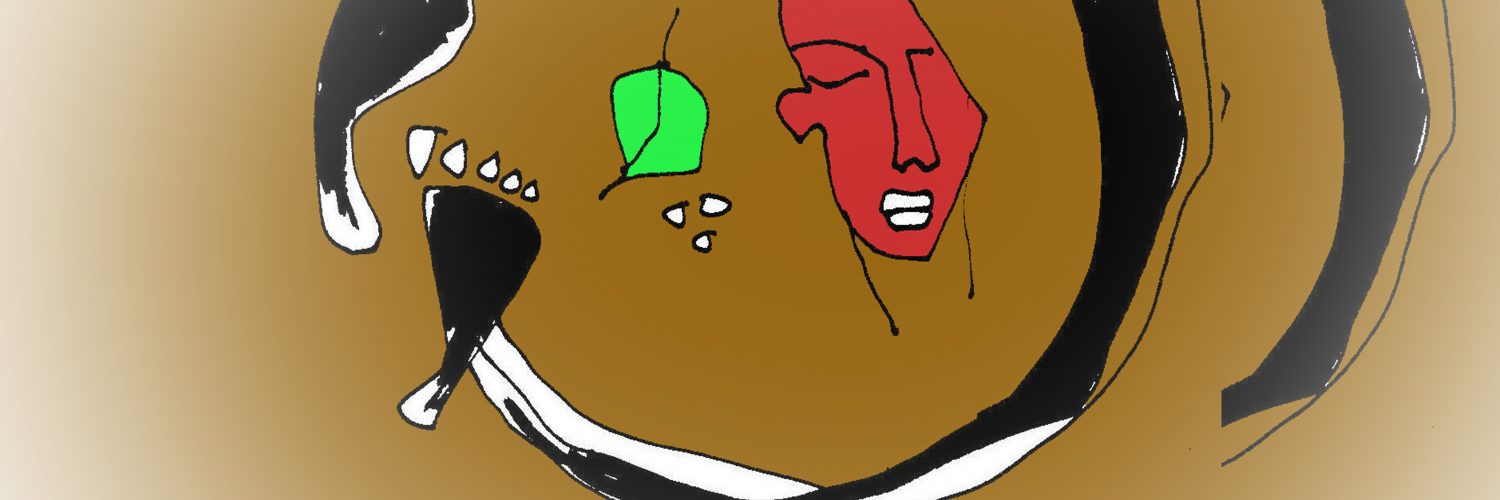


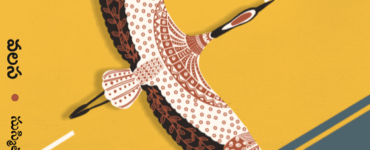

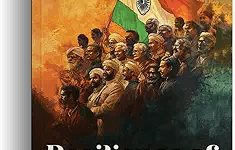
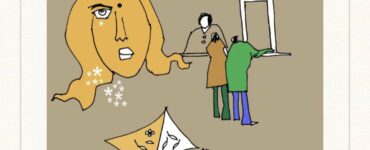
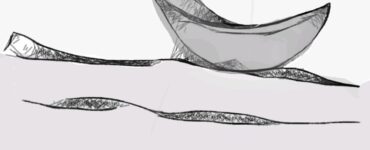
Add comment